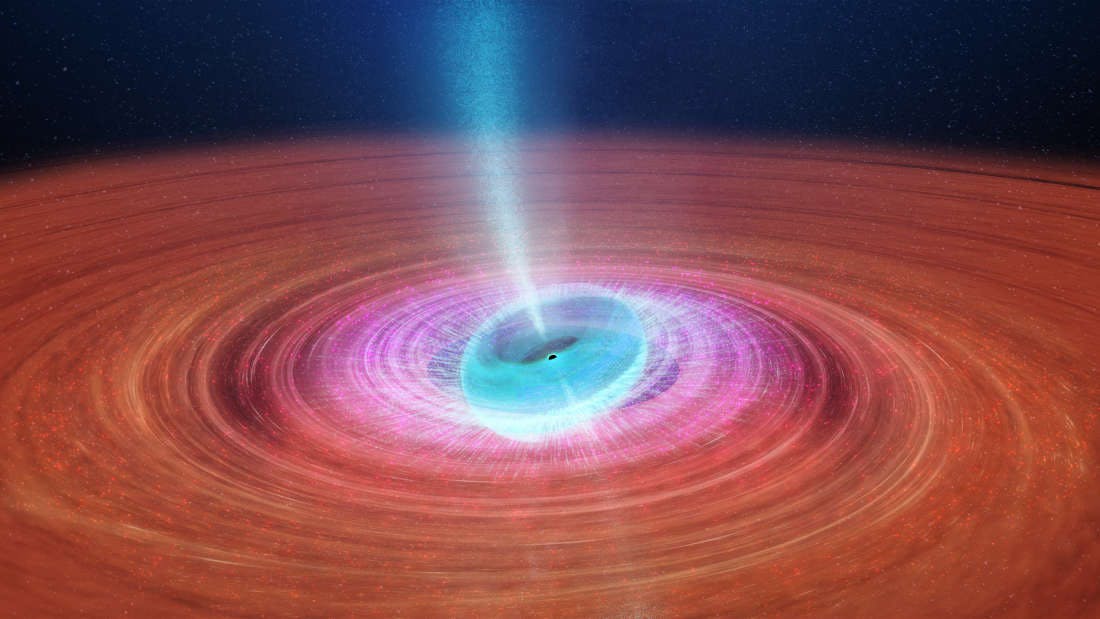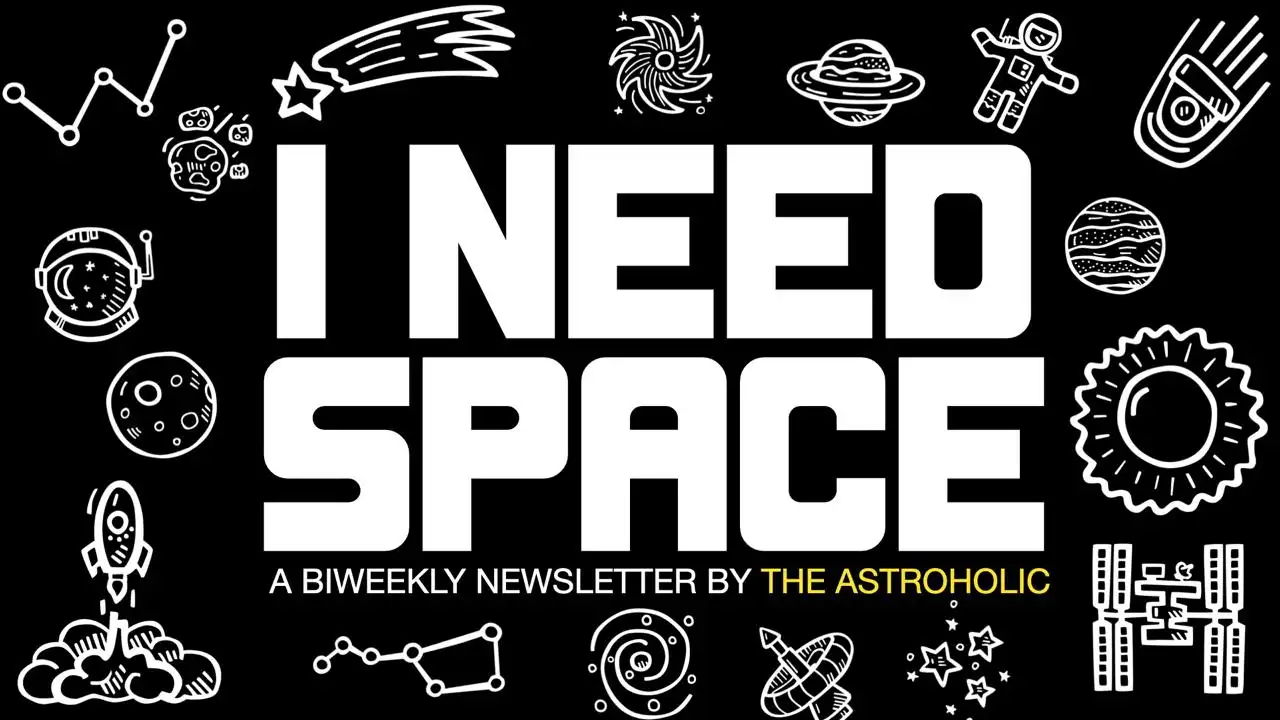What’s the deal with that mysterious wobbling black hole? And what are the dangers of the supermassive black hole at the heart of our galaxy?
Listen on Apple Podcast or on your favourite podcast player through Anchor.
Hello and welcome to The Astroholic Explains. I am your host producer Chris!
And I’m Dr. Alfredo Carpineti. This is a podcast for people to ask me questions about astronomy, and I’ll do my very best to answer them.
Okay, so my question for you today. This one is inspired by V 404 Cygni, the stellar-mass black hole with the wobble that’s been caused by gravity dragging space-time around. Does the supermassive black hole at the centre of our Milky Way, Sagittarius A*, have an accretion disk? And if not, could it one day? And if it forms a jet, What would that mean for the Milky Way?
Whoa, that is a lot of stuff.
Only the big questions here!
Shall we start with V404 Cygni?
If you want, you can start with that one or you could just start with…
No, I think I think we need to give a bit of background because we jump in full force in the previous episode. V404 Cygni is a stellar-mass black hole, which means that it is more or less the size of what a star could be: its nine times the mass of the Sun. And something that we found around this black hole, for the first time is that its jet precess.
So, precession is movement of a spinning top At the beginning, a spinning top starts by spinning vertically and then after a while it doesn’t fall but it starts going around, forming a little circle with its spinning direction. So that is exactly what happens around this black hole. And what it was so surprising is that this wobble this procession happens every few minutes.
They were taking hours-long observations of this black hole and what they got, surprisingly was something that looked like a long exposure picture.
Just a blur.
Yeah, just a blur. And so they had to completely change their approach to how they were actually “photographing” this object. How they were studying it. And it was just fascinating that they had to come up with ways to take images that will last, like, 70 seconds… to have this sort of snapshot. And they could construct this movie off the data changing, and they worked out that this region, the accretion disk [skipped back to the explanation of an accretion disk]
Black holes that are actively feeding their surrounding by material that is falling into the black hole. V404 Cygni is orbited by a star, about 70% the mass of the sun, and it’s stealing material from that start, and that is the accretion disc. Roughly I think, 10,000,000 kilometers in diameter. But at the center, in the few closest 1,000 kilometers, the gravity is so intense that this disk is warped. So the direction which the black hole spins and the disc there are slightly off each other. And the gravity of the black hole is so strong that it actually drags space and times around.
So you have this sort of whirlpool of spacetime around and so it twists the accretion disk, and that makes the jet wobble. We don’t exactly know how jets form. If they are formed by the closest part of the disk? At that point, the material coming in the black hole (and there’s a lot of material) and it’s getting really hot because of all the interaction with gravity. But there’s also a lot of density there because all the material’s trying to get in and be sucked in by the black hole. So those interactions could be forming this jet. Or it could be something produced by the black hole itself. We are not quite sure. But what we know is that the warp there is a thing that is creating this wobble, and that’s coming straight from general relativity.
Now for your second question: “What about the black hole at the centre of the Milky Way?” Sagittarius A* is our friendly neighborhood black hole, it is at the core of the Milky Way, and it’s definitely not a stellar-mass black hole. It’s a supermassive black hole.
It’s a big boy.
Yeah, it’s an absolute unit. That’s what it is. It’s between 4.3/4.6 million times the mass of the Sun. Yet, it’s still quite small.
It’s still relatively tiny compared to what they just took an image of.
Yeah, like recently they took an image of the supermassive black holes of M87 which is huge, but it’s also over 1,000 times bigger in mass. So you would expect something like that to be bigger than the solar system.
Sagittarius A* is relatively small. It would fit within the orbit of Mercury in our Solar System. And the good thing: it’s very calm.
So it’s not coming for us anytime soon!
It’s not gonna come for us anytime soon, but we wouldn’t fall into it. It’s the indirect stuff that it might, but only might, might hurt us but it’s nothing to worry about.
If there is material orbiting it, it’s not in a serious accretion disc. There is not a major accretion disk around Sagittarius A*. It’s dormant. And so on that note, it’s fine. There is no jet of material or anything.
So would it take something like, for example, the Andromeda merger to knock it out of a dormant state?
Yes, or even a smaller merger could do that. There are a lot of satellite galaxies around the Milky Way, they are dwarf galaxies, that’s what we called them. And we know that a few have already merged with the Milky Way. Milky Way has cannibalized them and if there is an influx of material that goes straight to the core of the Milky Way, it could create an accretion disc and activate the black hole.
So the accretion disk means that there is a large supply of material. A lot of these interactions could be just a one-off, that can create a small jet or small release of material. But there is nothing dramatic.
They could be Tidal Disruption Events, where a star gets a little bit too close to Sagittarius A* suddenly is ripped apart, and the material is heated to such a high temperature that starts shining in X-rays. There are a lot of things that are would still give us very little concern.
Maybe with the Andromeda merger, there is a lot more interaction, and you could produce the jet. The jet tends to go out in a certain way.
Usually, if you have a spiral galaxy and you have an active supermassive black hole, what happens is they [the jets] just tend to go sort of perpendicular to the plane of the galaxy. Simply because of the black hole tends to spin, just like the galaxy spins.
I’ve read in the past that there are these jets that black holes emit. Are they, the jets, of, I want to say ionized particles being shot, maybe 3,4,5,6 light-years away from the black hole?
That is a severe underestimation. So you can have ionized atoms, atoms that have lost their electrons. You can have the electrons. You can have protons; you can have plasma!
What happens around black holes: you don’t have just gravity. You have this heat from the accretion. You have a lot of things going on and you also have strong magnetic fields. And you have interaction between charged particles and magnetic fields that creates very intense light that can push other things out.
So there is a lot of mess that we don’t exactly understand. And what happens is this jet of hot material keeps expanding and they can become millions of light-years across. They go out of galaxies and they become much, much bigger than galaxies.
Now are my mistaking this because I’m sure that within the last year or so, this study has been done to see if Sagittarius A* at the heart of all of the Milky Way does indeed have anything like that on it, sort of throwback to my question to start like what if it could happen? And now I’m remembering haven’t scientists said that there is a jet or that the direction which the black hole is facing for lack of a better term would mean if there was a jet, it would be aimed right at us?
There is no jet and it’s not aimed at us. There are these things called Fermi bubbles, they are regions perpendicular to the Milky way of hot material. So we think that Sagittarius A* was active in the past but it’s sleeping now.
So when it will be active again, we’ll have some effect on the Milky Way, yes, but it shouldn’t be too dramatic.
So when you have interactions between galaxies and a supermassive black hole become active, you can produce these galactic wide winds of material, and they can interact with dust and gas and quench star-formation.
Those winds can enter star systems but we don’t think that should be too dramatic, although they move quite fast. Would it be so dramatic for life? I don’t know.
There’s a lot of things that tried to kill us and a lot of things that might end destroying us first and foremost us. So these winds are hot, full of particles… it’s very complicated…
So it’s not like it would just go sort of ‘full death star’ and blow us to pieces?
No. Star systems have a sort of interplanetary magnetism due to the stellar wind. So charged particles are flowing out from the stars. Planets like our own and the major planets, the bigger planets, have strong magnetic fields…
So let’s imagine this stream of hot particles comes in. How is going to interact with the solar wind first? How much of it will penetrate the inner solar system? Once it penetrates the inner solar system is it going to create something much bigger than like a big solar storm?
It’s complex, and to believe that those are sort of Death Star level of destruction, it feels a bit speculative, but not an expert on those…. Maybe somebody’s done the calculation and they’re like “No Alfredo, you’re completely wrong! They will kill us!”
We’ve observed galactic-wide winds in distant galaxies, but obviously we don’t have the precision to see the effect on singular star systems. So we see the day pass through, but maybe they’re just like there are little wobbles as they go through a star system that we are missing.
Well, thank you for answering my annoying questions for today!
It’s always a pleasure!
Do you have any burning questions for The Astroholic If so, send them in to me @illucifer on Twitter, and I will spring it on him in an upcoming episode. See you next time!
Image Credit: Artist impression of V404 Cygni wobbling. ICRAR

